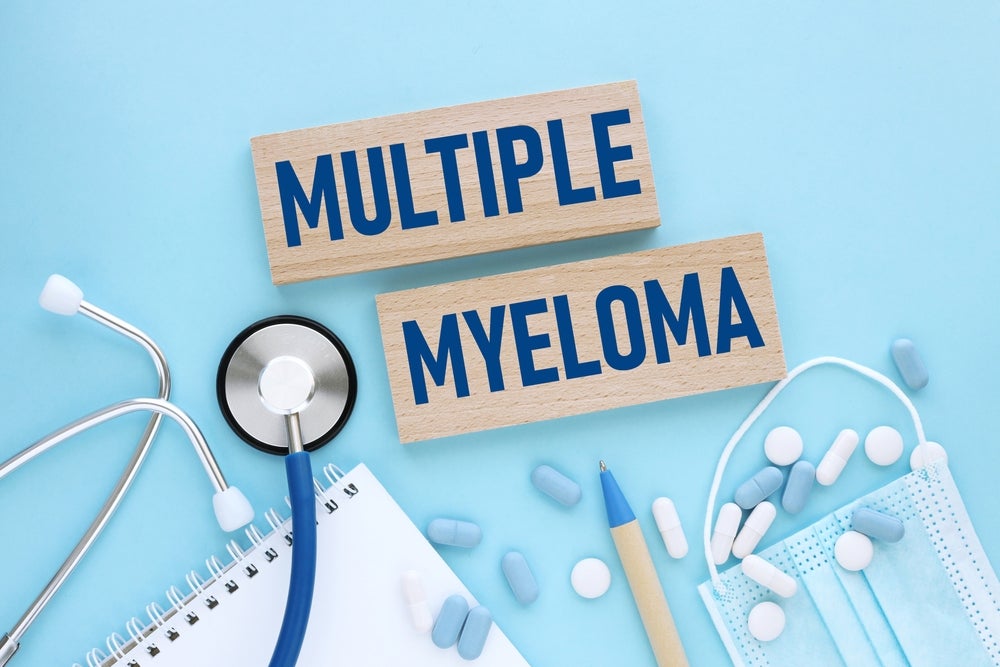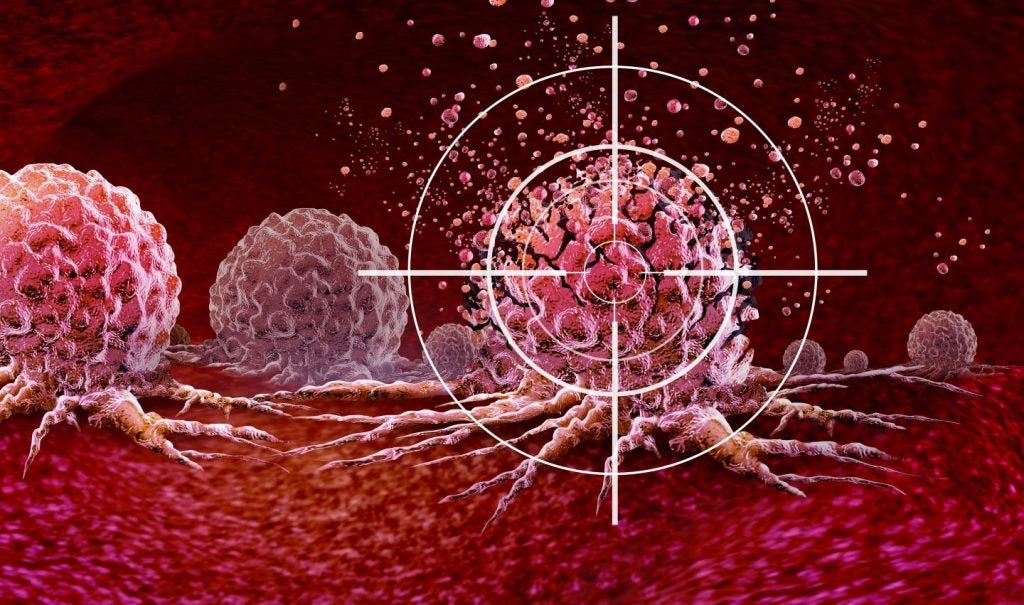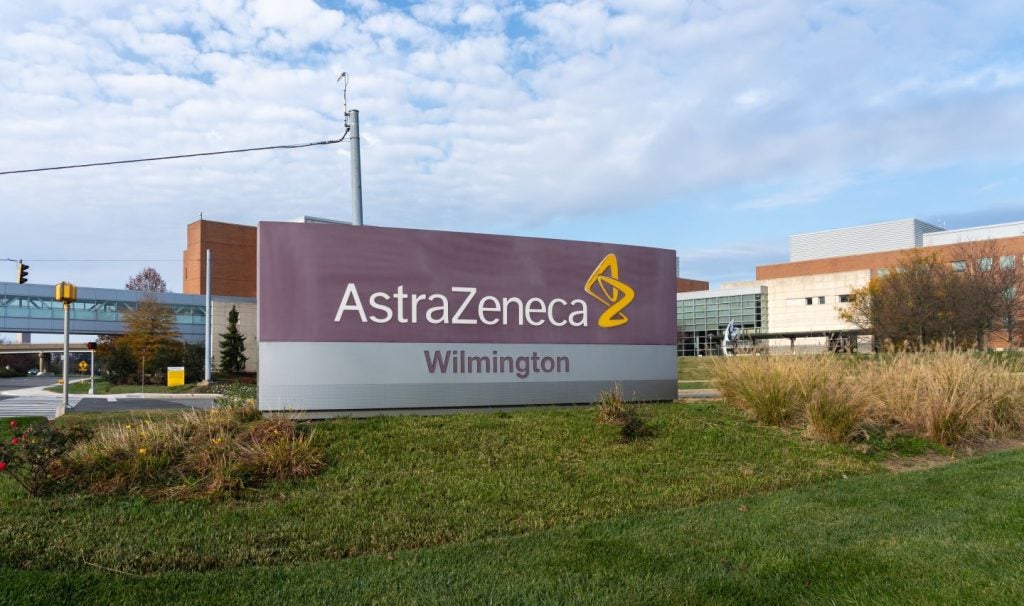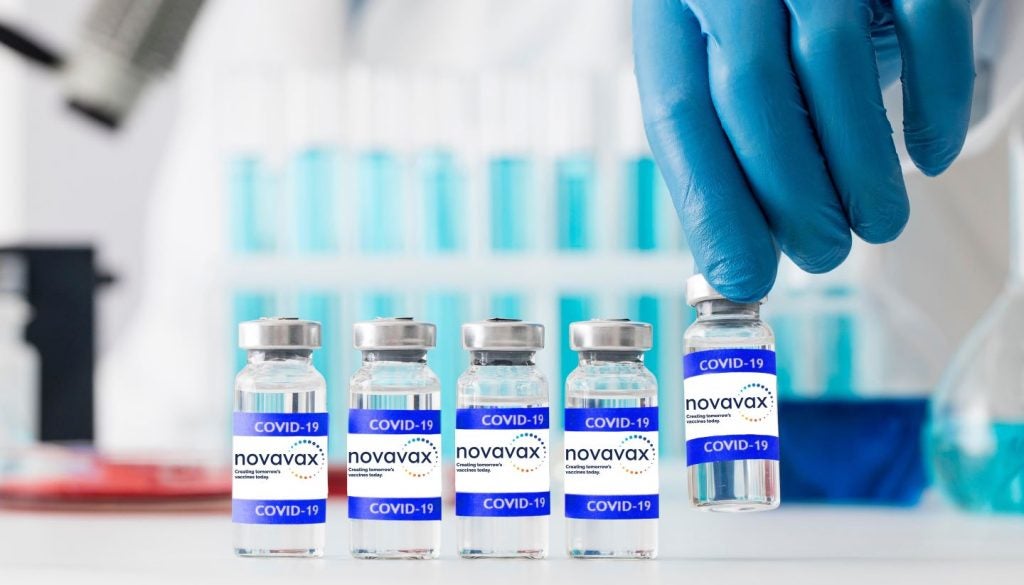Many significant Phase I-III studies targeting haematological malignancies, such as multiple myeloma (MM), were presented at the European Hematology Association Hybrid Congress 2024 (EHA 2024), which took place from 13 – 16 June.
MM is the third most prevalent blood cancer worldwide. According to GlobalData’s Multiple Myeloma: Epidemiology Forecast to 2032 report, there will be 305,020 diagnosed prevalent cases of MM in the eight major markets (the US, France, Germany, Italy, Spain, the UK, Japan, and China) by 2032. Recently, promising therapeutic options for newly diagnosed and relapsed/refractory MM (RRMM) have been introduced. Several studies presented at the congress, including DREAMM-8, LINKER-MM1, and GMMG-HD7, highlighted the potential of products such as GSK’s Blenrep (belantamab), Regeneron’s linvoseltamab, and Sanofi’s Sarclisa (isatuximab) in improving treatment outcomes for MM patients.
Positive DREAMM-8 trial results for MM
The Phase III DREAMM-8 trial, a head-to-head, open-label, randomised, multicenter trial, evaluated the efficacy and safety of Blenrep in combination with pomalidomide plus dexamethasone (arm A) versus BMS’ Pomalyst/Imnovid (pomalidomide) plus bortezomib and dexamethasone (arm B) for patients with RRMM with more than one prior line of therapy, including lenalidomide.
Patients were assigned randomly to arm A (n=155) or arm B (n=147), with 25% and 29% having prior anti-CD38 antibody treatment, respectively. After a median follow-up of 21.8 months, the median progression-free survival (PFS) was not reached for arm A, compared to 12.7 months for arm B, with a hazard ratio (HR) of 0.52 (P<0.001). The 12-month PFS rates for arm A were 71%, and for arm B were 51%. The objective response rate (ORR) for arm A was 77%, while arm B was 72%. Arm A had a complete response (CR) rate of 40%, while arm B had a CR rate of 16%. Arm A exhibited a favourable trend in overall survival (OS) (HR 0.77), and follow-up is underway. Adverse events (AEs) occurred in over 99% of arm A patients (91% grade 3/4) and 96% of arm B patients (73% grade 3/4). Ocular AEs were reported in 89% of arm A patients (43% grade 3/4), while only 30% of arm B patients (2% grade 3/4). In arm A, 63% of patients experienced serious adverse events (SAEs), while 45% of patients in arm B experienced SAEs. Fatal SAEs occurred in 11% of both groups. In arm A, the treatment discontinuation rate due to AEs was 15%, while in arm B, it was 12%. Based on these results and the Phase III clinical trial DREAM-7, this combination treatment will now become a new option for individuals after a first relapse or heavily treated for MM.
According to GlobalData’s Multiple Myeloma: Global Drug Forecast and Market Analysis to 2027, Blenrep is anticipated to achieve global sales of $681m by 2027 in eight major markets (USA, France, Germany, Italy, Spain, UK, China, and Japan). Although GSK previously withdrew Blenrep after failing to meet confirmatory trial results in 2022, the drug is returning to compete with Johnson & Johnson’s Darzalex (daratumumab). Furthermore, GSK is exploring the potential to position Blenrep as a first-line treatment for MM. Blenrep is expected to introduce new competition for J&J and Legend Biotech’s BCMA CAR-T Carvykti (ciltacabtagene autoleucel) and potentially for BCMA-targeted T-cell engagers such as J&J’s Tecvayli (teclistamab).
See Also:
Linvoseltamab in RRMM
Data from the Phase I/II first-in-human, open-label LINKER-MM1 study investigating the safety, tolerability, and anti-tumour activity of linvoseltamab monotherapy as a treatment for RRMM, were also presented. Linvoseltamab exhibited substantial efficacy in RRMM patients during a median follow-up of 14.3 months for 117 patients in the 200 mg dosing cohorts. The ORR was 71%, with partial response (≥VGPR) at 65% and a CR or greater at 50%. The median duration of response (DOR) was 29.4 months, with a 12-month likelihood of maintaining response of 81% for all responders. The 12-month PFS was 69% for all patients and 95% for those with CR. The 12-month OS was 75% for all patients and 100% for those with CR. As a result, not all patients, including those with CR, reached both PFS and OS. Cytokine release syndrome (46.2%), neutropenia (42.7%), and anemia (38.5%) were the most frequently reported treatment-emergent adverse events.
How well do you really know your competitors?
Access the most comprehensive Company Profiles on the market, powered by GlobalData. Save hours of research. Gain competitive edge.

Thank you!
Your download email will arrive shortly
Not ready to buy yet? Download a free sample
We are confident about the unique quality of our Company Profiles. However, we want you to make the most beneficial decision for your business, so we offer a free sample that you can download by submitting the below form
By GlobalDataGlobalData’s analyst consensus forecast projects linvoseltamab to generate global sales of $736m by 2030. A Phase I/II clinical trial is currently underway to evaluate linvoseltamab as a first-line therapy for MM. The FDA has designated linvoseltamab as Fast Track and accepted it for priority review for the RRMM treatment. Regulatory MAA applications for linvoseltamab are under review by EMA to treat adult patients with RRMM. Trial investigators anticipate that the FDA will decide on approval by the the FDA action date of 22 August 2024.
Isatuximab in newly diagnosed MM
The interim analysis of the Phase III GMMG-HD7 trial evaluated the addition of Sarclisa to standard-of-care induction (lenalidomide, bortezomib, and dexamethasone; RVd) followed by high-dose therapy (HDT) and autologous stem cell transplantation (ASCT). The trial comprised 662 patients, of whom 660 were eligible for analysis. The trial demonstrated that the Sarclisa and RVd therapy combination arm (Isa-RVd) had significantly deeper responses and higher rates of minimal residual disease (MRD) negativity than the RVd arm. In particular, the Isa-RVd arm exhibited higher rates of CR or better (43.5% versus. 34.0%) and VGPR (82.8% versus. 68.7%). Furthermore, 66.2% of patients in the Isa-RVd arm attained MRD negativity following the most recent ASCT, compared to 47.7% in the RVd arm. The MRD negativity and deep response rates for Isa-RVd remained higher after intensification (72.0% versus 56.5% for MRD negativity). These secondary endpoint CR results illustrate the efficacy of Sarclisa in improving treatment responses in newly diagnosed MM followed by HDT and ASCT. The trial is currently assessing the addition of lenalidomide maintenance therapy. In another presentation at the congress, the BENEFIT trial results showed that Sarclisa increased MRD negativity to 47%, compared to 24% in patients treated with lenalidomide and dexamethasone (Rd) in transplant-ineligible newly diagnosed MM patients. Additionally, the FDA accepted a priority review for this combination regimen for transplant-ineligible treatment-naïve MM patients, with an expected outcome by 2024. According to GlobalData’s analyst consensus forecast, Sarclisa will get $887m in global sales, while its rival, Darzalex, will reach almost $17.5bn by 2030.
Correction: A previous version of this article had incorrect figures describing the linvoseltamab clinical data in terms of response rate, follow-up times and minimal residual disease. The sixth paragraph has been updated to reflect the correct data.









Related Company Profiles
GSK plc
Regeneron Pharmaceuticals Inc
Sanofi
Johnson & Johnson
Legend Biotech Corp